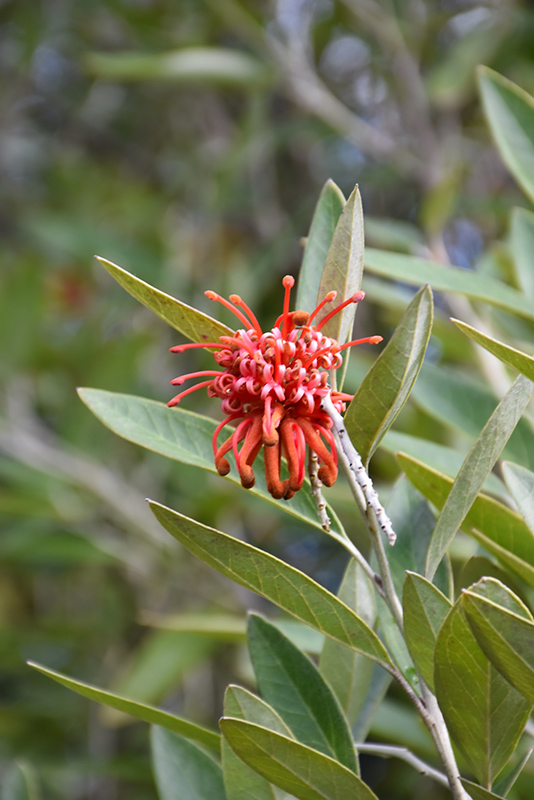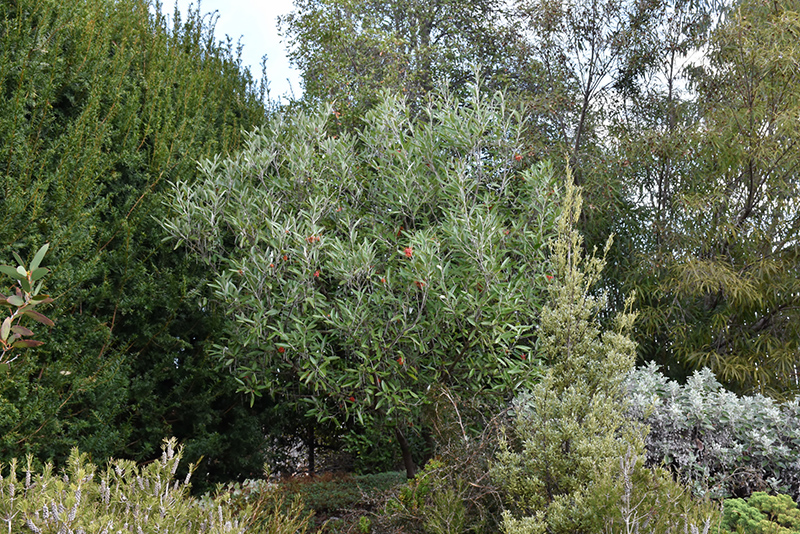Plant Finder
Height: 10 feet
Spread: 10 feet
Sunlight:
![]()
Hardiness Zone: 7b
Description:
An adaptable species that will assume an upright, bushy form; grows well in most well drained soils; interesting red spidery flowers from orange buds cover the branches in late winter and spring; drought tolerant once established
Ornamental Features
Royal Grevillea features delicate clusters of red spider-like flowers at the ends of the branches from late winter to early summer, which emerge from distinctive orange flower buds. It has attractive grayish green foliage with silver undersides which emerges light green in spring. The narrow leaves are highly ornamental and remain grayish green throughout the winter.
Landscape Attributes
Royal Grevillea is an open multi-stemmed evergreen shrub with a more or less rounded form. Its relatively fine texture sets it apart from other landscape plants with less refined foliage.
This is a relatively low maintenance shrub, and should only be pruned after flowering to avoid removing any of the current season's flowers. It is a good choice for attracting bees, butterflies and hummingbirds to your yard, but is not particularly attractive to deer who tend to leave it alone in favor of tastier treats. It has no significant negative characteristics.
Royal Grevillea is recommended for the following landscape applications;
- Mass Planting
- Hedges/Screening
- Rock/Alpine Gardens
- General Garden Use
Planting & Growing
Royal Grevillea will grow to be about 10 feet tall at maturity, with a spread of 10 feet. It has a low canopy with a typical clearance of 1 foot from the ground, and is suitable for planting under power lines. It grows at a fast rate, and under ideal conditions can be expected to live for approximately 20 years.
This shrub should only be grown in full sunlight. It does best in average to evenly moist conditions, but will not tolerate standing water. It is particular about its soil conditions, with a strong preference for sandy, acidic soils. It is somewhat tolerant of urban pollution. Consider applying a thick mulch around the root zone in winter to protect it in exposed locations or colder microclimates. This species is not originally from North America.





